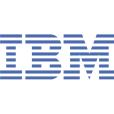 IBM (NYSE: IBM) announced today new initiatives designed to make it easier for clients to use "clusters" of servers for high-performance computing tasks. The company is investing in development, marketing and sales-channel programs that leverage IBM's technology prowess in high-end supercomputing and deep experience delivering industry-focused solutions.
IBM (NYSE: IBM) announced today new initiatives designed to make it easier for clients to use "clusters" of servers for high-performance computing tasks. The company is investing in development, marketing and sales-channel programs that leverage IBM's technology prowess in high-end supercomputing and deep experience delivering industry-focused solutions."High performance computing (HPC) is rapidly spreading from science and academic research to smaller businesses and departments of larger enterprises that need better ways to process compute-intensive workloads," said Wendy McGee, director, IBM Cluster Solutions. "IBM plans to reduce the risk, time and costs associated with cluster installation and deployment. At the same time, we see new opportunities to leverage IBM's investments and technology expertise in supercomputing in the middle and lower tiers of the HPC industry."
Four key components of IBM's expanded HPC cluster initiatives include:
1) Pre-architected, snap-together solutions for key industries. IBM has initially targeted applications in the life sciences, computer-aided engineering (CAE) and finance domains for solutions built with industry-leading ISVs and delivered through Business Partners. These pre-engineered solutions will be built for Linux and/or Microsoft Windows Compute Cluster Server 2003 operating systems and will feature networking from leading vendors such as Cisco Systems. IBM draws on its extensive engineering and services experience delivering high-performance computing solutions to industries to speed the adoption of IBM solutions that call for x86-based clusters.
- Working with Accelrys, a leading supplier of software and service solutions to pharmaceutical, biotechnology and industrial chemical research organizations, IBM is optimizing System x™ and BladeCenter® configurations for Discovery Studio. Discovery Studio is a comprehensive suite of modeling and simulation solutions for protein modeling and computational chemistry conveniently packaged into a single, easy-to-use Linux- and Windows-based environments.
- IBM has optimized hardware configurations for CAE applications from the following ISVs: ABAQUS, ANSYS, Inc., ESI Group, Livermore Software Technology Corporation (LSTC) and MSC.Software.
- Working with Microsoft, IBM is architecting a cluster solution targeted at the finance space featuring Microsoft Office Excel 2007 software. The solution will allow clients to use parallel processing on clusters for mission critical calculations, freeing up client machines from long-running calculations.
2) HPC ValueNet for IBM Business Partners. To bolster the ecosystem around clusters, IBM is introducing a new HPC ValueNet to incent and equip IBM Business Partners with the tools they need to bring cluster solutions to market. Tools include:
- Joint marketing plans and incentives for ISVs and IBM Business Partners.
- Sizing guides with predefined cluster configurations for simple ordering and set up, including templates that address two levels of cluster configurations -- a standard configuration, where cost is the primary decision factor, and enhanced configuration, where application performance is the determining factor for purchase.
- Accelerated delivery times and competitive pricing for cluster components through IBM's Express Seller program.
- Field support from the experts. IBM Business Partners have access to IBM's Cluster Enablement Team for technical questions and advice.
3) New benchmarking and tuning centers dedicated to Microsoft Windows Compute Cluster Server. IBM has expanded its relationship with Microsoft to offer customers, software vendors and IBM Business Partners four new benchmarking facilities in Poughkeepsie, N.Y.; Raleigh, N.C.; Beaverton, Ore.; and Montpelier, France. These new centers join a network of global Linux benchmark centers.
4) On-Demand Test-Drive Facility. Customers interested in moving to a clustered environment can quickly test-drive their HPC applications in IBM's Deep Computing Capacity on Demand centers. With access to over 20,000 processors, customers large and small can tap into IBM Systems to help accelerate time to market and improve quality while helping to keep fixed costs to a minimum.
About IBM Clusters
HPC clusters can range from as few as two to thousands of servers woven together to deliver high-speed performance demanded by a broad range of applications. IBM hardware offerings in this space include System x, System p™ and BladeCenter servers and IBM System Storage™, as well as the IBM System Cluster 1350, an integrated, factory built and tested cluster with networking from leading vendors. With the inclusion of the Cell Broadband Engine and ClearSpeed Advance accelerator boards, IBM offers customers hybrid cluster architecture options -- bringing to bear a whole new level of coprocessor capability.
Hardware components feature key technology innovations including the industry's first "snap in" scalable blade, Xcelerated Memory Technology and PowerExecutive™, an industry-first energy management technology, which enables clients to meter and cap the amount of power used by a single server or groups of servers to optimize energy use and application performance.
For more information about IBM Clusters, go to http://www-03.ibm.com/systems/clusters
No comments:
Post a Comment